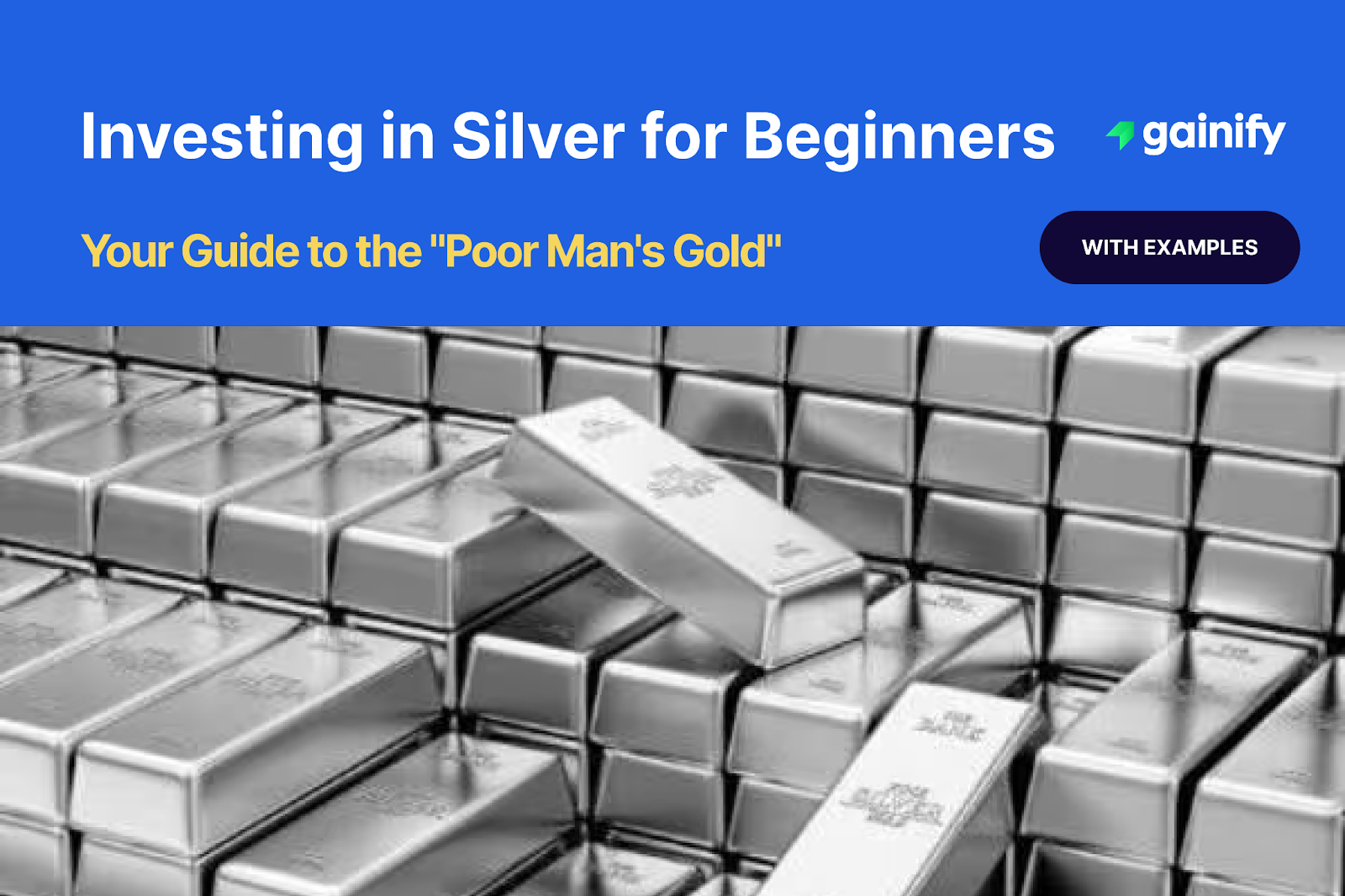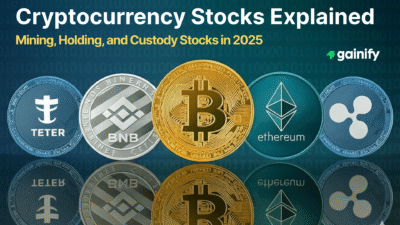For many venturing into the precious metals market, gold often comes to mind first. Yet, sitting quietly in its shadow, another lustrous metal offers a compelling and often more accessible entry point for beginners: silver. Standing apart from many common assets in the financial markets, silver holds a unique distinction: it is highly valued for its historical monetary significance and simultaneously plays an indispensable role in cutting-edge technology and everyday products.v b
Have you ever considered what makes this gleaming commodity so fascinating? It is more than a simple store of value. Silver’s unique properties mean it is embedded in everything from renewable energy solutions like solar-panel cells to essential medical supplies. This widespread industrial demand, combined with its traditional appeal as a hedge against inflation and market volatility, creates a dynamic investment profile that is worth understanding.
This investment guide aims to shine a light on investing in silver for beginners, unraveling the various ways to gain exposure to this versatile metal. Whether your interest lies in holding silver bullion coins, exploring silver ETFs, or even considering silver mining companies, we will break down the practicalities to help you build solid investing plans tailored to your investment objectives.
By the end of this exploration, you will be equipped with the knowledge to confidently assess silver’s place in your diversified portfolio. It is an asset with a rich history and a promising future, offering distinct advantages that appeal to long-term investors seeking both stability and growth potential.
What is Investing in Silver? Decoding its Value
Investing in silver means putting your money into this precious metal with the expectation that its value will increase over time. Silver holds value for two primary reasons: its role as a precious metal and its extensive industrial demand.
As a precious metal, silver shares many characteristics with physical gold. It has been used as a store of value, a medium of exchange, and a hedge against economic instability for thousands of years. Investors often turn to silver during periods of high inflation or economic uncertainty, seeing it as a safe haven that tends to hold its value when traditional currencies or assets might falter. This “safe haven” appeal is a significant driver for many long-term investors seeking protection from market fluctuation.
Beyond its status as a monetary metal often found in silver jewelry, silver is an indispensable industrial commodity. It possesses unique properties, including the highest electrical conductivity, thermal conductivity, and reflectivity of any metal. According to the Silver Institute’s World Silver Survey, these properties make it critical in a vast array of modern applications:
- Electronics: Found in switches, circuits, and conductors in a vast array of electronic devices, powering high technology.
- Solar Panels: A key component in photovoltaic energy production, particularly through silver paste used in solar-panel cells. This demand is crucial for renewable energy.
- Medical Uses: Used extensively in medical supplies, surgical instruments, anti-bacterial agents, and some medical devices due to its antimicrobial properties.
- Automotive Industry: Essential in many auto parts, including electrical contacts, fuses, and heating elements for both internal combustion engine vehicles and increasingly in battery electric vehicles for their advanced electrical systems.
- Water Treatment: Silver’s antibacterial properties are utilized in various water purification systems.
- Other Technological Uses: This includes silver conductive inks for printed electronics and the rapidly developing field of silver-based nanotechnologies.
Understanding these dual drivers of demand is crucial when considering investing in silver. Its price is influenced by both investor sentiment regarding economic stability and global industrial output, often reflecting the broader economic backdrop.
Silver vs. Gold: A Comparative Look in the Precious Metals Market
When investing in silver, it is natural to compare it with its more famous counterpart, physical gold. Both are considered precious metals and often act as safe havens within the broader precious metals market during economic turmoil. However, they possess distinct characteristics that can appeal to different investment objectives.
Similarities:
- Safe Haven Assets: Both metals are often sought after during periods of economic uncertainty, market volatility, or high inflation, as they are perceived to hold their value when traditional assets may decline. They represent tangible wealth outside of the conventional financial markets.
- Tangible Assets: They are physical assets that cannot be printed or created by central banks, offering a sense of security and a hedge against currency devaluation, especially when interest rates are low.
- Long History as Money: Both have served as forms of currency and stores of wealth for millennia.
Key Differences:
- Price and Accessibility: Gold is significantly more expensive per ounce than silver. This makes investing in silver more accessible for beginners or those with smaller investment amounts, allowing them to own more physical ounces for the same capital. This lower entry point makes silver bullion coins like the UK’s 1-ounce silver Britannia from the Royal Mint or the American Eagle coins popular.
- Volatility: Historically, silver prices tend to be more volatile than gold prices. This means silver can experience larger price swings in shorter periods, offering higher potential upside but also greater downside investment risk. This higher volatility is partly due to its significant industrial component.
- Industrial Demand: This is a major differentiator. While gold has some industrial uses, silver’s industrial demand is far more extensive and accounts for a larger portion of its overall consumption.
- Market Size and Liquidity: The global precious metals market for gold is considerably larger and generally more liquid than the silver market. This can sometimes mean tighter spreads (the difference between buying and selling prices) for gold.
- Gold-Silver Ratio: This ratio measures how many ounces of silver it takes to buy one ounce of gold. It fluctuates and is often used by market participants to gauge relative value between the two metals, influencing market entries.
For investors seeking a more affordable entry point into precious metals market with potentially higher volatility and exposure to industrial growth, silver can be an attractive option. For those prioritizing a more stable safe haven and a larger, more liquid market, physical gold might be the preferred choice. Many long-term investors consider holding both for balanced exposure within their asset allocation.
Ways to Invest in Silver for Beginners
For those new to the market, there are several accessible ways to begin investing in silver. Each method offers different levels of direct ownership, liquidity, and cost:
- Physical Silver (Bullion): This involves purchasing tangible silver in forms such as:
- Silver Bullion Coins: Government-minted physical coins like American Eagle coins, Canadian Silver Maples, or the UK’s 1-ounce silver Britannia. These are widely recognized and often have legal tender status.
- Silver Bars: Available in various sizes, from small one-ounce bars to larger 1,000-ounce minted bars. Bars typically carry lower premiums over the spot price than coins.
- Silver Rounds: Privately minted, coin-shaped pieces of silver that are not legal tender but often carry attractive designs.
Pros: Direct ownership, tangible asset, no counterparty risk. Provides a sense of security during a market downturn.
Cons: Storage costs and security concerns. Options include a safe deposit box at a bank or specialized approved vaults. Obtaining warehouse receipts for larger holdings is also an option. There is potential for higher premiums over spot price, and it is less liquid than other forms for quick selling. You also face transaction costs when buying and selling from a silver dealer.
- Silver Exchange-Traded Funds (ETFs) & Exchange-Traded Commodities (ETCs): These funds hold physical silver on behalf of investors and trade on major stock exchanges.
- Examples: iShares Silver Trust (SLV) or Aberdeen Standard Physical Silver Shares ETF (SIVR) are popular silver ETF & ETCs. Be cautious with leveraged options, which is not suitable for beginners due to magnified investment risk.
Pros: High liquidity, easy to buy and sell through a standard brokerage account, no storage worries, diversified exposure without direct ownership challenges. They often have low management fees.
Cons: You do not directly own physical silver, slight tracking error might exist, subject to market risk like any traded fund.
- Silver Mining Stocks: Investing in the shares of silver mining companies or silver miners.
Examples: Prominent silver mining companies include Pan American Silver (PAAS), First Majestic Silver (AG), and Hecla Mining (HL). You might also consider streaming/royalty companies like Wheaton Precious Metals (WPM), which provide upfront financing to miners in exchange for a percentage of future production or revenue, offering a different exposure to the sector.
Pros: Potential for higher returns if the company performs well and silver prices rise, offers leverage to silver price movements. Can provide exposure to the mining and production of silver.
Cons: Subject to company-specific risks (management issues, operational problems, geological surveys, dependence on by-products like lead mining), higher volatility than physical silver or ETFs, may not perfectly track silver price. This is more of an equity investment than a direct commodity investment. Consider also streaming/royalty companies which fund miners in exchange for a percentage of future production.
- Silver Futures Contracts: These are agreements to buy or sell a specific quantity of silver at a predetermined price on a future date.
- Pros: Can offer significant leverage, useful for hedging.
- Cons: Very high risk, requires active management, not suitable for beginners due to complexity and potential for large losses. Generally considered part of active trading strategies.
For beginners, physical silver and silver ETF & ETCs are generally the most accessible and recommended starting points. They offer the most direct exposure to silver’s price movements without the complexities and risks of mining stocks or futures. Your risk tolerance and investment objectives should guide your choice. It is always wise to consult with an investment adviser to build comprehensive investing plans.
A Different Perspective: The Case Against Silver as a Core Investment
While investing in silver holds an undeniable allure for many, it is crucial to consider perspectives that highlight its potential drawbacks as a core investment. Critics argue that silver, despite its precious metal status, exhibits higher volatility compared to gold and lacks the consistent, predictable returns often found in a diversified portfolio of stocks and bonds. Its dual role as both a commodity and a safe haven can make its price movements less predictable, as it responds to both industrial demand cycles and broader economic sentiment.
Some financial experts suggest that holding a significant portion of a portfolio in precious metals like silver can be an opportunity cost. They argue that capital allocated to silver might otherwise be invested in assets that generate income (like dividends from stocks or interest from bonds) or exhibit stronger long-term growth potential. Historically, while silver has seen periods of impressive gains, its long-term average returns have often lagged behind broad equity market indexes like the S&P 500 index. For long-term investors focused purely on capital appreciation and income generation, the lack of inherent yield from physical silver or most silver ETF & ETCs can be a significant deterrent. They might argue that true diversification is better achieved through a mix of equities, bonds, and perhaps real estate, rather than relying heavily on commodities. This view does not dismiss silver entirely, but rather positions it as a more speculative or tactical holding, suitable for a smaller portion of a portfolio, rather than a foundational asset class. This approach contrasts with the stability often sought during market downturns or periods of high interest rates.
Frequently Asked Questions about Investing in Silver for Beginners
Is silver a good investment for beginners?
Investing in silver can be a good option for beginners seeking diversification and a tangible asset. However, it is essential to understand its volatility and the different ways to invest. For many, starting with silver ETF & ETCs or a small amount of silver bullion like American Eagle coins is a reasonable approach. It is an investment guide not to be taken as definitive investment advice.
What is the difference between silver bullion coins and silver bars? Silver bullion coins (or physical coins) are typically government-minted, like American Eagle coins, and may have a face value, while silver bars are larger, privately minted bars. Coins often carry higher premiums due to their collectibility or legal tender status, while bars usually offer a lower premium per ounce for larger investments.
Are silver ETFs safe for beginners?
Silver ETF & ETCs are generally considered a convenient and liquid way for beginners to invest in silver. They offer exposure to silver’s price movements without the complexities of storing physical metal. However, like all investments, they carry market risk and can lose value. They are traded through a standard brokerage account.
Does silver act as a hedge against inflation?
Historically, many long-term investors view silver, like physical gold, as a potential hedge against inflation. During periods when the purchasing power of currency declines, precious metals market assets have often retained or increased their value. However, past performance is not a guarantee of future results.
What is the spot price of silver?
The spot price of silver is the current market price at which silver can be bought or sold for immediate delivery, as determined by global markets and organizations like the London Bullion Market Association. It is the benchmark price for silver bullion and forms the basis for pricing silver ETF & ETCs and other derivatives.
Should I invest in silver mining stocks?
Silver mining companies or silver miners can offer higher potential returns if the companies perform well and silver prices rise. However, they also come with additional company-specific risks beyond the price of silver itself, making them generally more volatile and less suitable for beginners compared to physical silver or silver ETF & ETCs.
Key Insights for Silver Investors
Investing in silver offers a compelling opportunity for beginners to diversify their portfolio and tap into an asset with both precious metal and industrial demand driven by high technology and renewable energy. By understanding the different avenues for investment, from physical silver to silver ETF & ETCs, and how it compares to physical gold through the gold-silver ratio, you can make informed decisions that align with your risk tolerance and investment objectives.
Key Takeaways:
- Dual Value: Silver’s price is influenced by its role as a precious metal (safe haven) and its crucial industrial demand in sectors like photovoltaic energy and medical uses.
- Accessible Options: Beginners can start with silver bullion coins (like American Eagle coins) or convenient silver ETF & ETCs through a brokerage account, rather than highly leveraged options like ProShares Ultra Silver.
- Diversification Potential: Silver can add a unique element to a balanced portfolio, potentially acting as a hedge against inflation and market fluctuation, particularly during a market downturn.
- Compare to Gold: Silver is more volatile and more heavily influenced by industrial cycles than physical gold, offering a different investment risk profile.
- Understand Volatility: Be aware that silver can experience significant price fluctuations and is generally more volatile than other traditional asset classes.
- Long-Term View: Like most investments in the financial market, silver is best approached with a long-term investor mindset, focusing on its potential for sustained value over a long investment horizon.
Remember, every investment decision should be part of a broader financial plan. As experts in the financial industry consistently emphasize, knowledge is power in the precious metals market.




